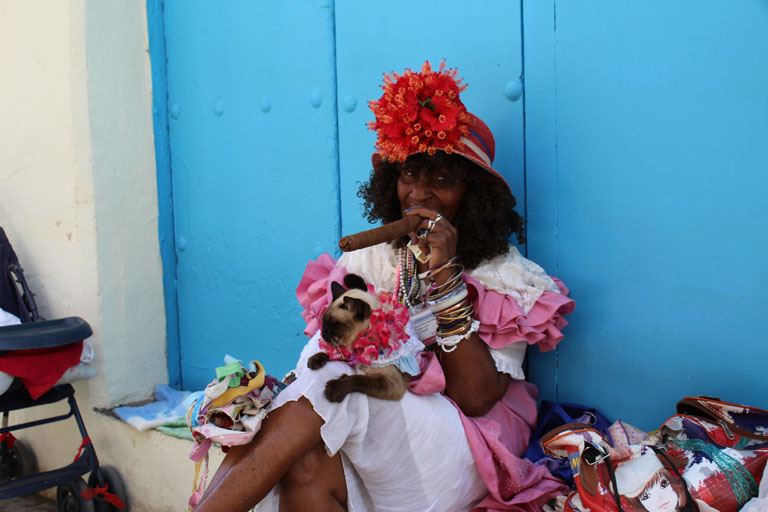Trip Report: Alternative Winter Break in Cuba
The Tickle College of Engineering sponsored the Winter Alternative Break in Havana, Cuba, from December 16 – 22, 2017. Marking the third trip to Cuba by Global Initiatives were participants Morgan Yount, sophomore in Materials Science, Alexandra Defilippis, freshman biomedical engineering major, Sara Dishner, junior accounting major, Brandon Woodley, senior in Computer Engineering, Hayden Coffey, junior in Computer Science, Kevin Kleiner, junior physics major, and Natalie Ray and Peter Mathurin, both junior chemical engineering majors. TCE International Coordinator Judith Mallory led the trip, the 18th for the Global Initiatives program. Globe Aware of Dallas, Texas, served as partner in coordination of the trip details.
- Read Hayden Coffey’s student trip report »
- Read Alexandra Defilippis’ student trip report »
- Read Sarah Dishner’s student trip report »
- Read Kevin Kleiner’s student trip report »
- Read Natalie Ray’s student trip report »
- Read Brandon Woodley’s student trip report »
Please see the previous two accounts of the trips to Cuba for general country information.
The group flew into Havana’s José Marti Airport; named for José Julián Martí Pérez (January 28, 1853 – May 19, 1895). A national hero of Cuba, he was a poet, essayist, journalist, revolutionary philosopher, translator, publisher, Freemason, and political theorist. He supported the economic reforms of Henry George, and became a symbol for Cuba’s bid for independence against Spain in the 19th century.
Before leaving the airport, the group headed for the cambio, or money changer’s. Neither the U.S. dollar nor credit cards from U.S.-owned institutions may be used in Cuba due to the long-standing embargo placed on the country by the United States in 1962; it is the most enduring trade embargo in modern history. Therefore, it was necessary to obtain Cuban Convertible Pesos, or CUCs for use in Cuba. The CUC is equal to the U.S. dollar, one-to-one, however if changing directly from U.S. dollars to CUCs, a charge of 10% is assessed. There is no charge for changing from the Euro.
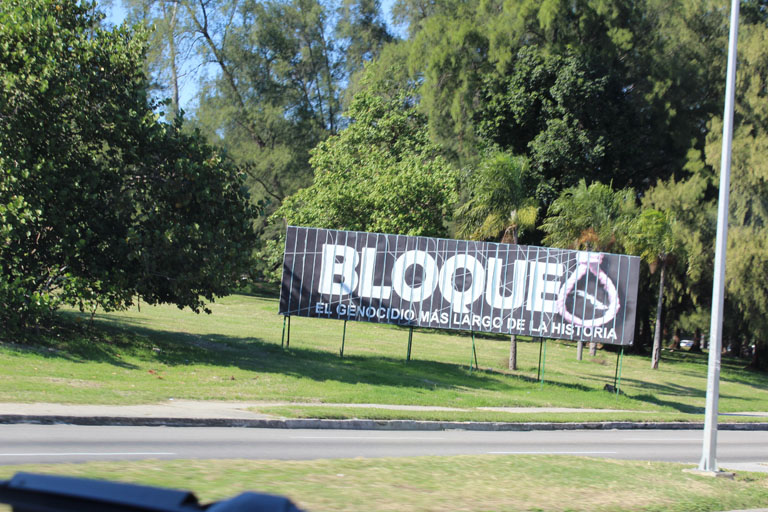
Andres Gonzalez, host for the group, collected everyone at the airport and delivered them to the casa particular, a private home where the group would stay for the week. As was the case for the last two visits to Cuba, the lodgings were located in historic Habana Vieja, or Old Havana. Within the last few years, the Cuban government has approved the use of private homes for tourist rental. Similarly, the concept of the paladar was also approved. It is a private home opened up by the resident to serve meals to the public. The option of operating any independent enterprise in Cuba is taxed at the rate of 20%. Individuals operating these independent enterprises are no longer employees of the Cuban government. Along the roads into town are colorful pro-Castro and anti-embargo propaganda on billboards and signs. Cubans refer to the embargo placed upon their country by the United States as “the blockade.” Surprisingly, this history does not seem to affect the outward attitude of Cubans to U.S. visitors; in the city or out in the country, to a person, the Cubans were warm, welcoming, friendly, and interested in visitors from the United States.
The first evening was an opportunity for a welcome dinner at the casa, featuring typical Cuban food including Ropa Vieja, black beans, rice, and plantains.
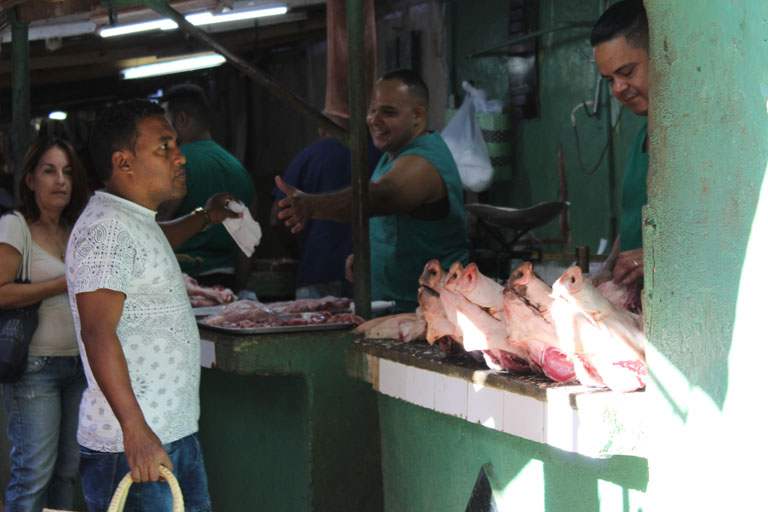
The first full day in Havana, a Sunday, started with breakfast at the casa before a walking tour of the city. The group saw many old streets in the historic part of the city, as well as passing Plaza Vieja, the modern art museum, Museum of the Revolution, the Paseo del Prado, the Ambos Mundo Hotel, the pharmacy museum, the Plaza de Armas, Plaza del Cristo, a local fruit and meat market, Parque Central and adjacent art deco era hotel, the Bacardi Building, and the Bay of Havana. Sundays are probably the liveliest day of the week in Havana, evidenced by many, many locals out enjoying the music playing on every corner.
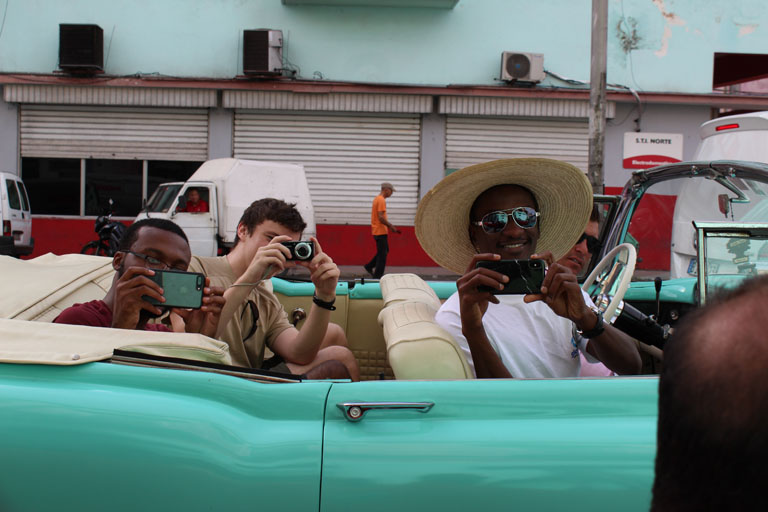
The day started with a classic car tour; the cars used were two Chevrolets and a Buick, all from the late 1950s and in amazing mechanical and physical repair. The tour started in Habana Vieja and traveled over to the neighboring areas of Vedado and Miramar, home to many high-ranking government officials, purportedly including Raul Castro, and proceeded back through Barrio Chino, or China Town, marked by a stone Paifang gate. It is the only China Town in the world with no Chinese people in it; interestingly, China has become the main export destination for Cuban goods, as well as the main importer on the island. The capital’s Barrio Chino is noticeably lacking in Chinese diaspora, most of whom fled the island soon after Fidel Castro nationalized businesses in 1959. There is a sizeable Chinese cemetery nearby.
One of the evenings was spent at the Castillo de San Carlos de la Cabana, the largest fortress in Latin America, dating from the 18th century. Each night, young men from Cuba’s military, wearing period costumes, conduct a re-enactment of the canon ceremony, the Cañonazo. It is symbolic of times of yore when the gates to the city were closed each night at 9.00 p.m. On the grounds of the fort is the newly-opened Che Museum, honoring Argentinian revolutionary Ernesto “Che” Guevara, who was instrumental in helping Fidel Castro overthrow the Batista regime in 1959. Many artifacts of Che’s life are on display in this tiny museum, including his spy glasses, flak jacket, real and fake passports, photos from his medical school class (complete with cadaver) and even the small coffin-like box which held his excavated bones from his makeshift burial site in the mountains of Bolivia, after he was killed by the American CIA.
The work days were spent in the district of Casa Blanca, accessible by an old, rusty ferry in excellent operating condition. One must pass through security and have bags checked prior to entering the ferry. The security is due to a hijacking incident – in 2003 a group of eight men boarded the ferry with several coolers, claiming that they were having a picnic on the other side in Casa Blanca. Once on the water, they hijacked the ferry at knifepoint; the ferry captain explained that they did not have enough fuel on board to reach the hijackers’ preferred destination of Miami. That was when the men revealed that the coolers were actually holding fuel, which the boat ran out of in international waters. Cuban security forces commandeered the boat, and the fifty hostages on board were freed, with the perpetrators being arrested.
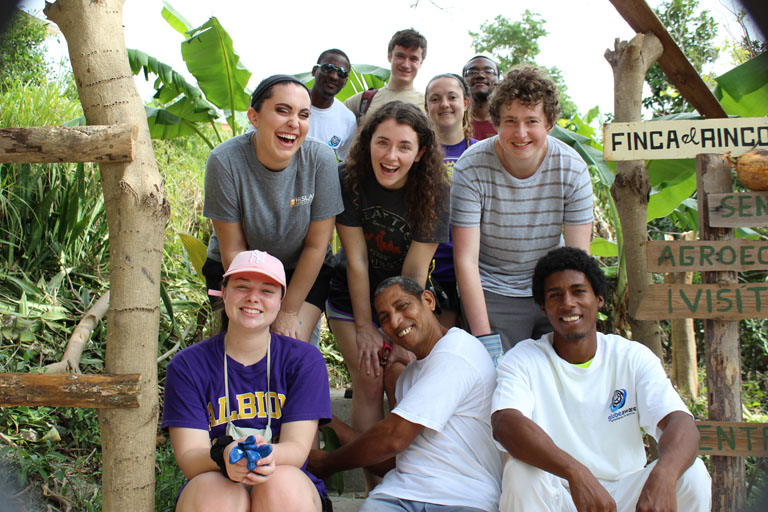
Immediately after exiting the ferry, one may observe an old, operational electric train. The quieter side of Havana, Casa Blanca has some residents working on the promotion of economic development. One attraction they hope to soon complete is a therapeutic center that will offer services to the community as well as tourists. In addition to meditation and yoga, they will offer massage, whole foods, and medicinal herbs, which are now being grown onsite at La Finca Archaeologica Rincon del Cristo. The reference to archaeology in the name refers to fossils found onsite. Coral is evidence that the island of Cuba was once under the ocean. The work project this time was a continuation of the wiring project started by the TCE group that visited in August. Specifically, they wired two structures uphill from the original kiosks. This will not only enable electrical use in those two structures, it will allow the site to be lighted in the evenings.
On the site is the sculpture El Cristo de la Habana, the Christ of Havana, a colossal sculpture representing the Sacred Heart of Jesus, the work of Cuban sculptor Jilma Madera. It was inaugurated on December 24, 1958, just fifteen days prior to Fidel Castro’s entering of Havana during the Cuban Revolution.
Another attraction visited by the group was the Camera Obscura. The only one of its kind in Latin America, this gift from Spain is an optical device that led to photography and the photographic camera. The nearby Maqueta de la Habana was next up on the agenda. A 1:500 scale miniature depiction of the city, it was a massive family effort which took several years to complete.
One of the days after work, the group had another tour of Havana, this time by bicycle taxi, or bici-taxi. The idea of the bici-taxi comes from the Chinese rickshaw. The base is a bicycle and a semi-covered double seat is attached in the back, where passengers can ride. Some of the vehicles had music, bumper stickers, air horns, and hood ornaments from classic cars. The conclusion of the tour was at the local crafts market, located in a huge, old warehouse on the waterfront of the Bay of Havana. Many booths and merchants were on hand, offering items such as tee shirts, flags, bags, backpacks, woven items, and an immense amount of original artwork.
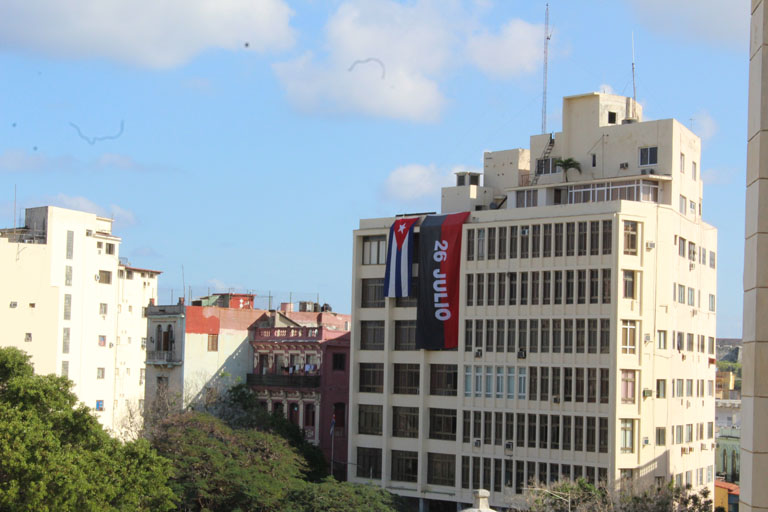
The group also visited the Museo Nacional de Bellas Artes de la Habana, or the Fine Arts Museum, purportedly holding over 30,000 individual pieces, all by Cuban artists. They also got to tour the Museo de la Revolucion, or Museum of the Revolution, commemorating major historical events in Cuba in and around the time of this event. The museum is filled with memorabilia and historical artifacts marking the revolution, as well as previous failed attempts. Items on display include weapons, photographs, printed news reports, medical equipment, blood-stained clothing, musical instruments, radios, and more. Prominent in the outdoor section is the Granma yacht used in an early unsuccessful attempt to overthrow the government in 1956, as well as the missile used to shoot down the United States Air Force plane that led to the only fatality of the Cuban Missile Crisis of 1962. The tank upon which Che Guevara, Fidel Castro, and Camino Cienfuegos rode through Havana to celebrate the Revolution in 1959, depicted in numerous photos taken on the day of the Revolution, is parked on the lawn in front of the museum.
A day trip was spent in the community of las Terrazas, or, the Terraces. Las Terrazas is a small community and nature reserve in the municipality of Candelaria, Artemisa Province, Cuba. It is located in the Sierra del Rosario mountains a little over an hour outside of Havana, and was designated a Biosphere Reserve by UNESCO in 1984. The pioneering ecovillage of Las Terrazas dates back to a reforestation project in 1968; it is a burgeoning activity center and the site of the earliest coffee plantations in Cuba. It is now home to 117 bird species, including 12 that are endemic. It contains more than 70 ruined coffee plantations founded by the French who escaped Haiti after the 1791 – 1804 Haitian revolution. Those wishing to stay the night can stay in the community’s sole hotel, the unusual Hotel Moka, an upmarket eco-resort built between 1992 and 1994 by workers drawn from Las Terrazas to attract foreign tourists. There is a 100-year-old rain tree around which the building was constructed, making it appear that the tree is growing through the structure. Close by, in the picturesque whitewashed village that overlooks the San Juan Lake, is a vibrant art community with open studios, woodwork and pottery workshops. The region’s biggest attraction is its verdant natural surroundings, ideal for hiking, relaxing and birdwatching.
The Cuban people demonstrated a sense of genuine warmth, friendliness, and determination to enjoy life; at any hour, people could be found on the streets talking, playing music, and enjoying each other’s company. The group came away with an appreciation for the culture of this highly-educated population, as well as for the perspective, history, politics, gastronomy, and economy of this country once shrouded in mystery and closed to citizens of the United States.
